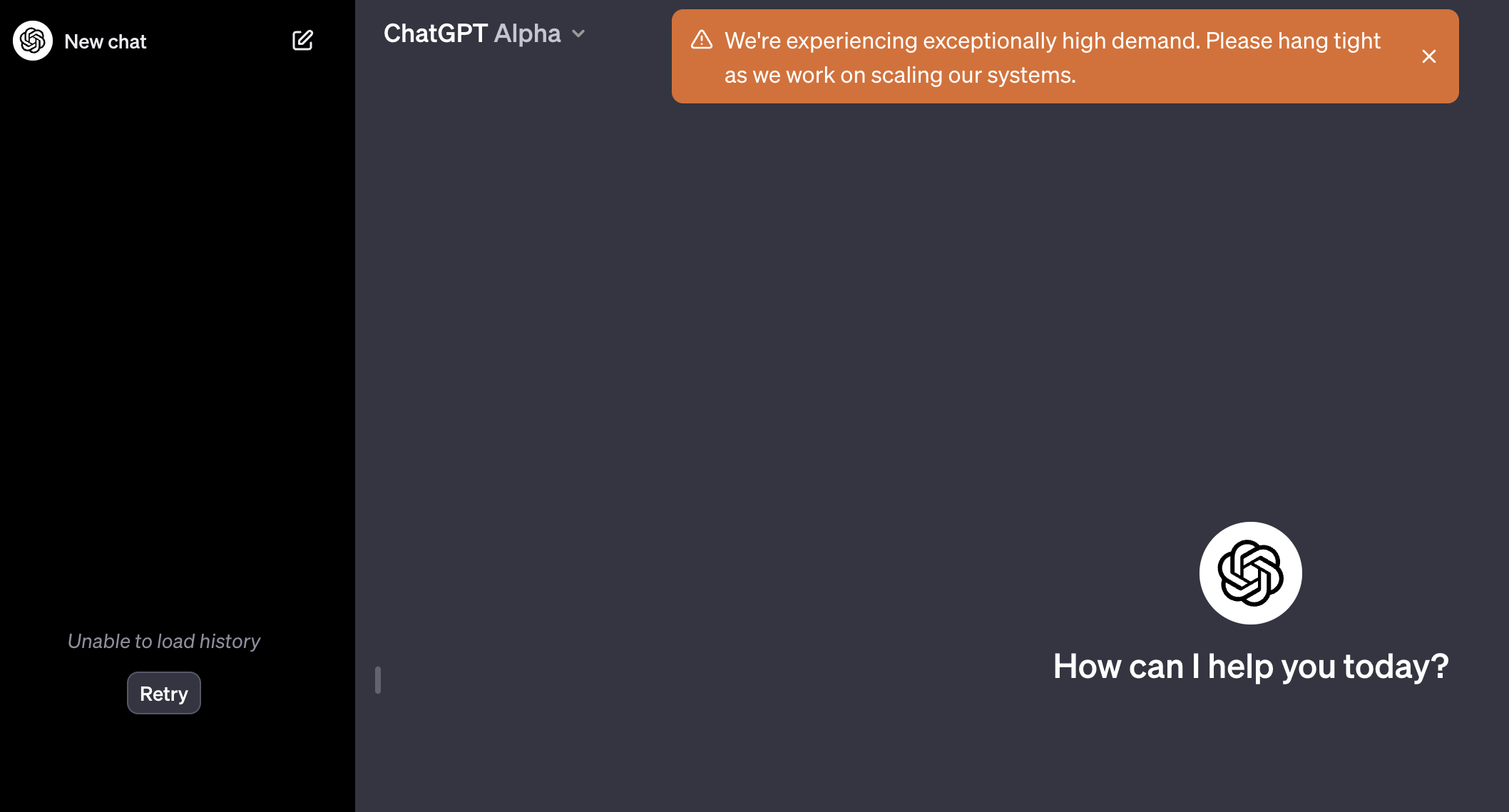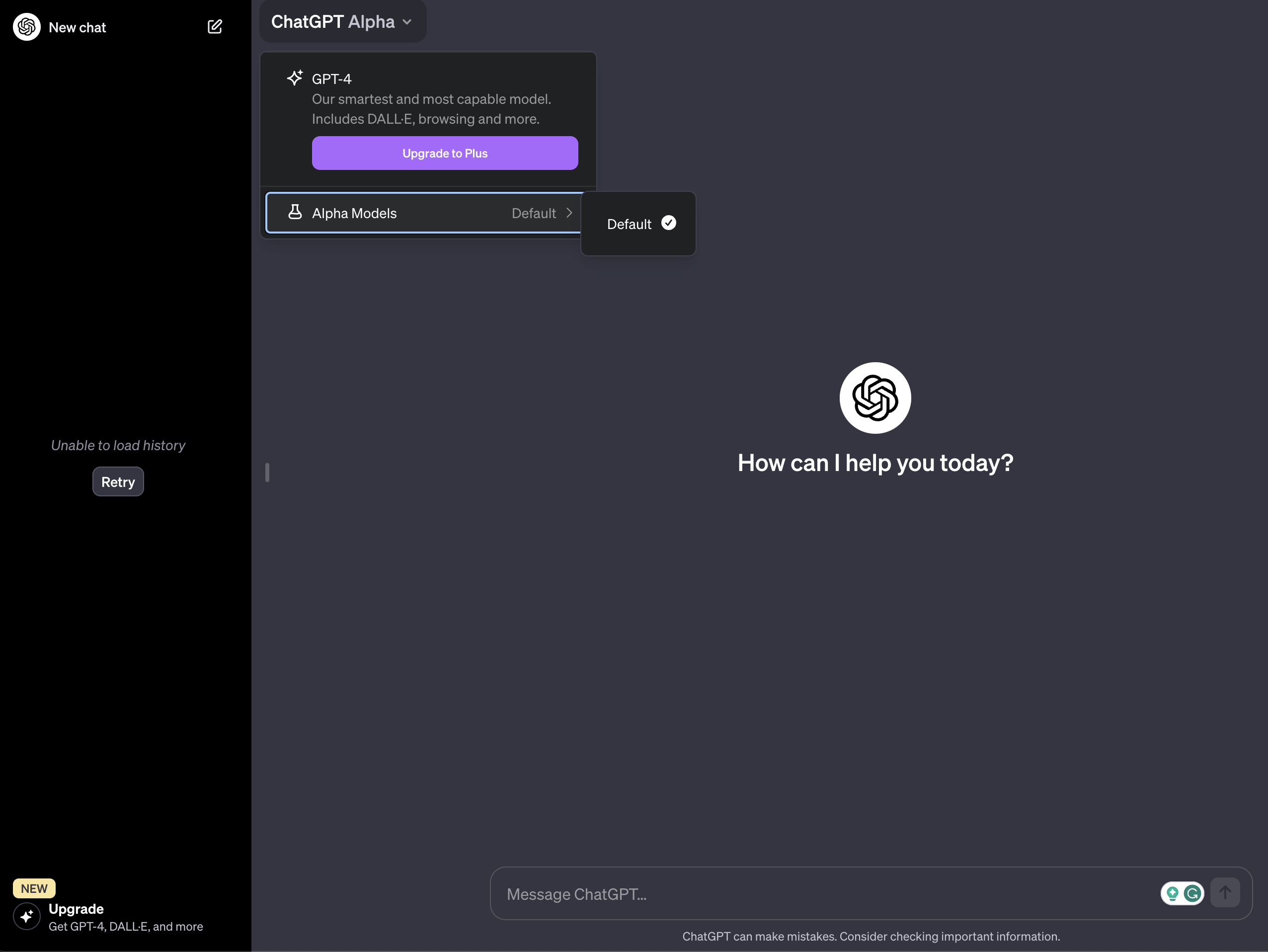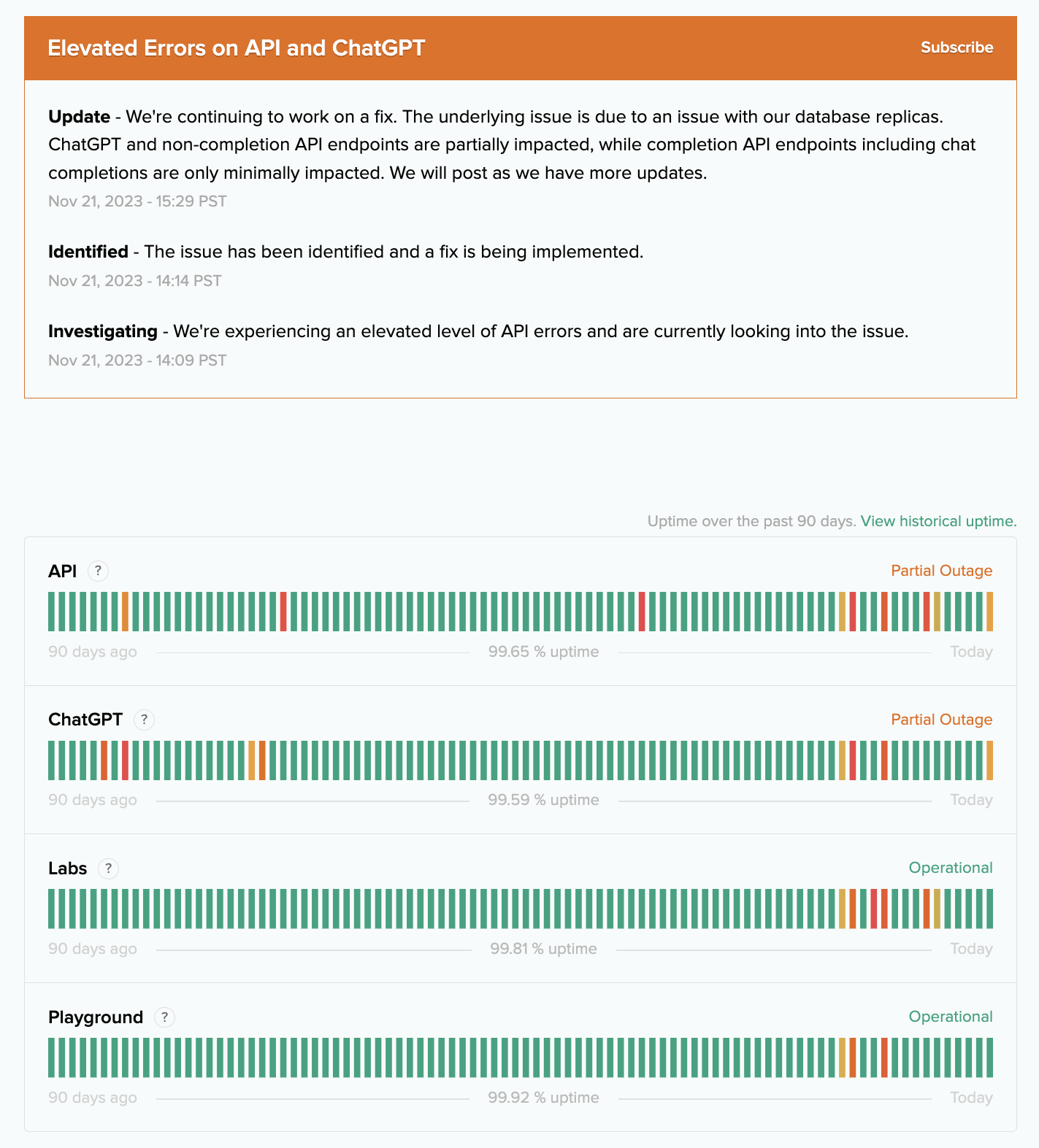SEO
ChatGPT Alpha Appears As OpenAI Works To Resolve Elevated Errors

Some ChatGPT users are experiencing high-demand errors on the OpenAI systems, and “ChatGPT Alpha” appears in the model selection dropdown.
In addition to the new voice capabilities in ChatGPT available for free and the continued wait for a decision on where Sam Altman will go next, is OpenAI about to launch something big?
This is the screen I received (as a ChatGPT Plus users) when trying to work on a task.

Along with the appearance of “ChatGPT Alpha” and the error, all of my chat history and custom GPTs were gone.
Once the error disappears, the dropdown selection looks like this.
 Screenshot from ChatGPT, November 2023
Screenshot from ChatGPT, November 2023
A post on the OpenAI Developer Forum from 18 days ago suggests it could be a version similar to GPT-4 All Tools that is available to free users.
ChatGPT Alpha is a free preview of the Pro version intended for free accounts.
I got stuck in Alpha mode (choosing the option in dropdown menu), subsequently being nudged to upgrade and had to clear cookies to trigger a new login to my Pro account— Kim Hjortholm (@hjortholm) November 21, 2023
According to Reddit users, it may be accessible at chat.openai.com/?model=gpt-alpha.
OpenAI is working on elevated errors on the API and ChatGPT.
 Screenshot from OpenAI, November 2023
Screenshot from OpenAI, November 2023
Other Plus subscribers are also experiencing the issue.
ChatGPT Alpha dropping? 🤔
System is bugging out, I’m already Plus member 😅 pic.twitter.com/Ei0KhSnzLf
— Min Choi (@minchoi) November 21, 2023
And dealing with lost conversation history.
Is ChatGPT completely lost it? My history is gone, shoved me into ‘Alpha’, and won’t show me whether I’m logged in.
I was literally about to back up all my chats.
Is anyone else seeing this (as an existing Pro user)? pic.twitter.com/zm4D1z4sLK
— Lizelle van Vuuren (@lizelle) November 21, 2023
In related news, this summarizes what we know so far about ChatGPT Alpha from Perplexity Pro, written with the new Claude 2.1 from Anthropic:
 Screenshot from Perplexity, November 2023
Screenshot from Perplexity, November 2023
Featured image: photosince/Shutterstock


















